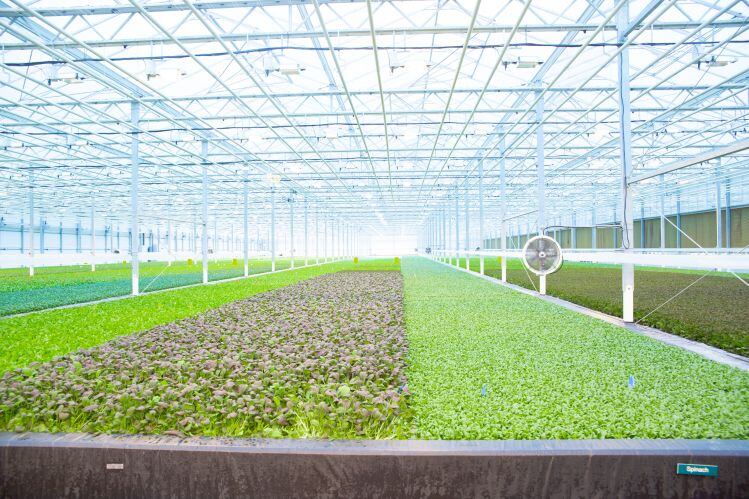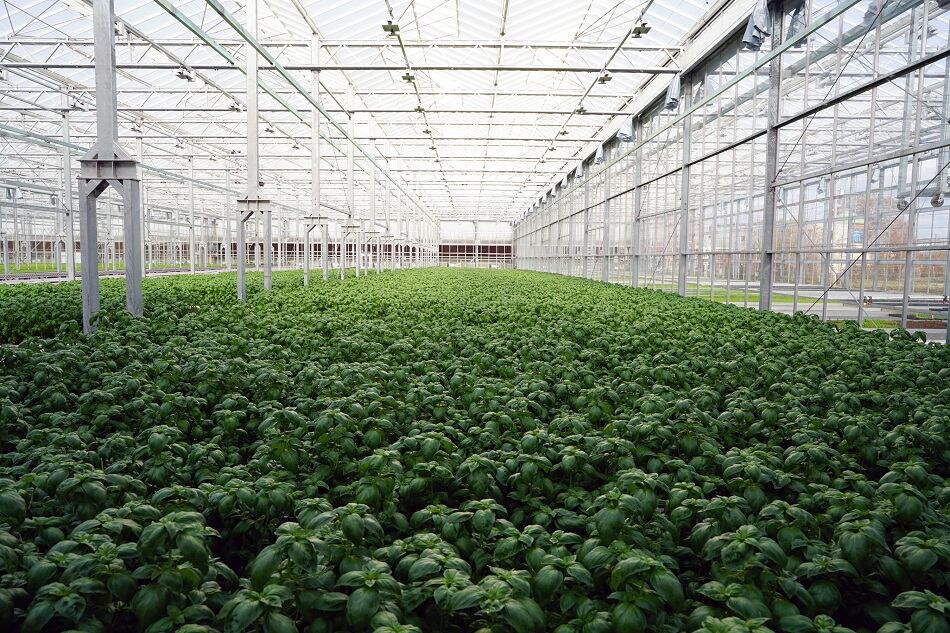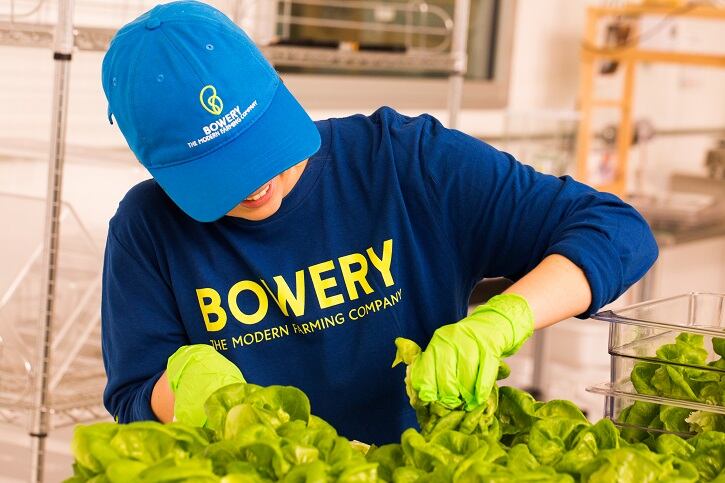Based in New York with greenhouses in Illinois, Ohio, Virginia, and Pennsylvania (where it has just opened a mega-facility) and three new farms under development in North Carolina, Massachusetts, and Texas, BrightFarms is one of a growing number of indoor farming businesses that have cumulatively raised more than $1bn over the last five years.
BrightFarms – which was founded in 2011 - currently supplies 2,000+ stores operated by chains including Ahold Delhaize, Kroger, and Walmart, and expects to expand its distribution to 15,000+ stores by 2025, said CEO Steve Platt, who is building a national brand he hopes will become synonymous with “pesticide-free, fresh, local produce.”
‘I think it will just become the new norm’
So is indoor farming always going to be a niche part of the produce business or are we seeing the beginnings of a fundamental shift in the way leafy greens, at least, get to market?
Not surprisingly, Platt reckons this is the start of a major shift. “Today salads and leafy greens are about a $7.6bn segment, and if you take out kits and things that aren’t packaged, indoor grown is pretty small at about 2%, but for some customers we work with today, we’re around 10% of the market and growing, and I think the future is really bright.
“Look at tomatoes, almost half of them are now grown indoors. They’re not all local, but I don’t see any reason why packaged leafy greens grown indoors couldn’t account for the same [percentage of the market as indoor-grown tomatoes] in the next 10 years or so, and we want to be the leaders in the space. I think it will just become the new norm.”
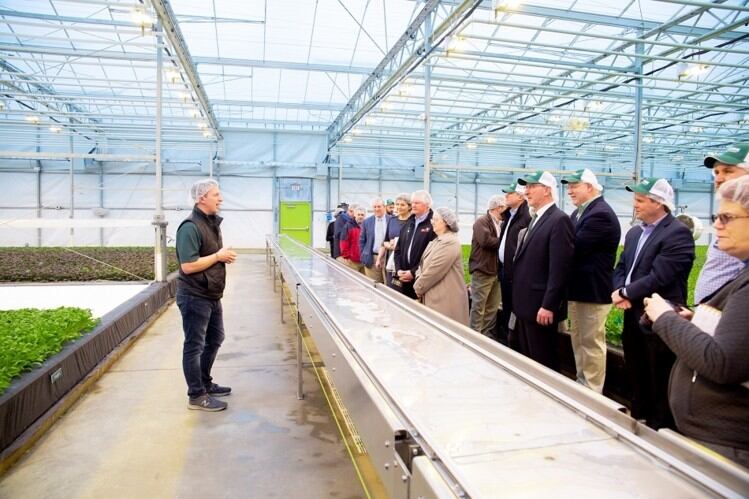
‘Consumers can taste the difference because it hasn’t been sitting on a truck for a week’
The major attraction to retailers and consumers is that BrightFarms' products are fresh, local, and pesticide free, at prices “in line with organic lettuce grown on the West Coast,” he said.
As for yields, a BrightFarms indoor farm yields 10 times more leafy greens per acre vs greens grown conventionally on the West Coast, due both to packing density and the higher number of growth cycles per year, he claimed.
It also uses 90% less land and 95% less shipping fuel, and means that product can get from harvest to supermarket shelves in as little as 24 hours, “about a week faster than leafy greens grown conventionally on the West Coast.”
Counterintuitively, growing greens in water instead of soil also uses 80% less water, as the water is continuously recycled. And as the plants are not watered from above, the leaves also stay dry and clean, while the roots are always in water during the growing cycle, and remain hydrated.
“Our goal over the next five years,” said Platt, who noted that 95% of lettuce consumed in the US is currently grown in California and Arizona, “is to make quality, locally-grown greens a staple on grocery shelves and in refrigerators nationwide.
“Consumers can taste the difference because it hasn’t been sitting on a truck for a week. You’re not going to get weather-related issues, you’re not going to get exposure to animals in the fields, which has led to many recalls on Romaine lettuce. We have a fresh, clean, safe, locally-produced product with surety of supply.”
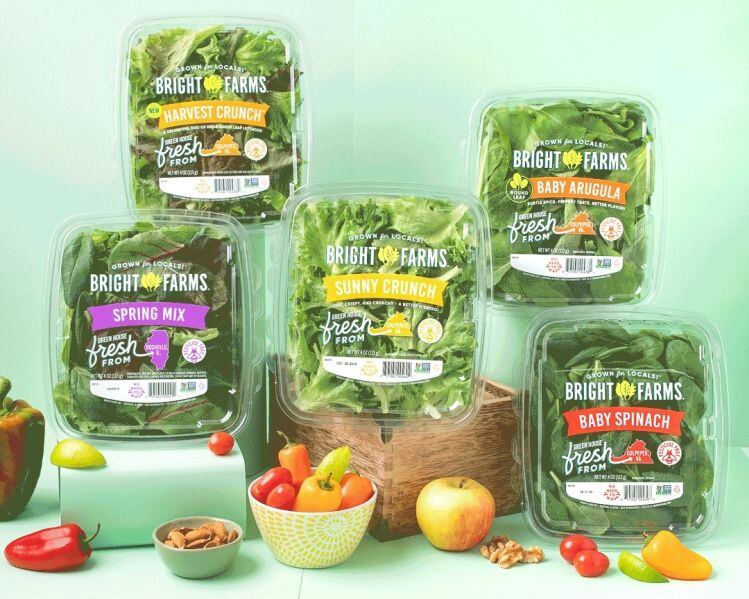
Scale and automation
So can anyone with a greenhouse and some entrepreneurial zeal make money from hydroponics?
No, said Platt, who noted that scale and automation are critical to making the economics of supplying large supermarkets work, which means large outlays of capital are required from the outset.
“We’re in this for the long term and we’re building greenhouses that will be around not for 5-10 years but for 30-50 years, and we’re building them in a way that we can continue to grow them along with the region that they serve,” said Platt.
“Over time, they’ll continue to get bigger and bigger, but we never want to ship further than a day, because we’re all about being local, so for freshness and sustainability reasons, a truck that leaves our facility should be able to make a delivery and get home the same night.”
Similarly, not all indoor farming systems were created equal, he claimed, with greenhouse-based systems deploying hydroponics (where greens are grown in water) and benefit from natural sunlight, proving more cost efficient than vertical farming, which is reliant on artificial lighting and therefore more energy intensive.
“They have much higher costs and their prices are $4-5 and ours are between $3-3.50, and their products aren’t any better.”
‘This pandemic has caused many of our partners to depend on us more’
BrightFarms experienced strong double digit uplifts in retail sales in the early months of the pandemic, which had highlighted the benefits of a more decentralized system for supplying produce vs. a more centralized supply chain that relies on shipping everything from the West Coast, said Platt.
“This pandemic has caused many of our partners to depend on us more.”
Watch the video below for a virtual tour explaining how BrightFarms grows its leafy greens.

